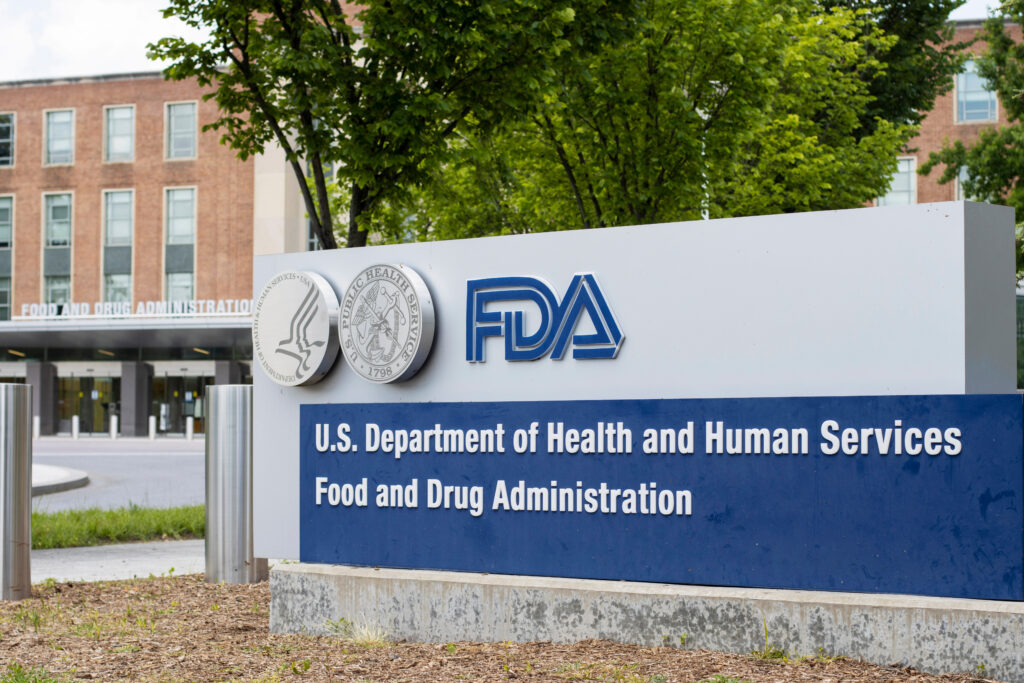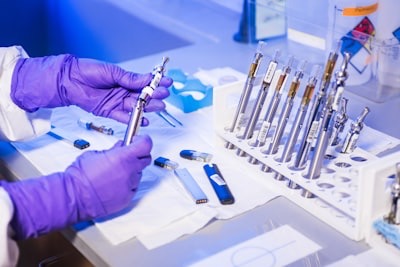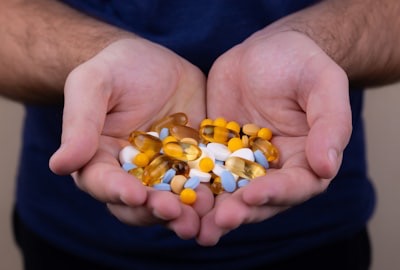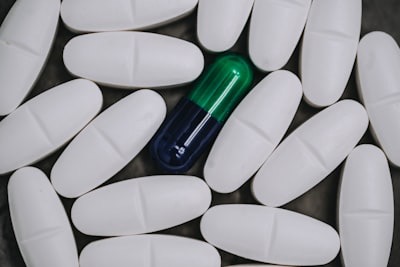Understanding FDA: Key Role in Drug Safety
Key Highlights
- The FDA is an agency within the Department of Health and Human responsible for ensuring the safety and efficacy of drugs, medical devices, and food products in United States.
- The FDA’s is to protect public health by regulating and monitoring the manufacturing, marketing, and distribution of these products.
- The FDA plays a crucial role in the approval process for drugs, conducting clinical trials and evaluating their safety and effectiveness.
- –market surveillance programs and adverse event reporting help the FDA monitor the safety of drugs after they are approved and on the market- The FDA’s regulations and oversight have led to improvements in drug safety over the years, protecting the public’s health.
Introduction
The Food and Drug Administration (FDA) is a federal agency in the United States that plays a vital role in ensuring the safety and efficacy of drugs, medical devices, and food products. The FDA’s mission is to protect public health by regulating and monitoring the manufacturing, marketing, and distribution of these products. Through its regulatory framework and approval process, the FDA evaluates the safety and effectiveness of drugs before they are made available to the public. Additionally, the FDA monitors the safety of drugs through post-market surveillance programs and adverse event reporting. Over the years, the FDA has made significant contributions to improving drug safety, protecting the public from potential harm.
The FDA’s Mission and Overview

The FDA’s mission is to protect the public health by ensuring the safety, efficacy, and security of human and veterinary drugs, biological products, and medical devices, including biologics. Additionally, the FDA is responsible for ensuring the safety of the nation’s food supply, cosmetics, and products that emit radiation. The FDA also has the authority to regulate the manufacturing, marketing, and distribution of tobacco products, including nicotine, to reduce tobacco use by minors. The FDA plays a crucial role in advancing public health by promoting innovations in medical products and providing accurate, science-based information to the public. This includes oversight of vaccines, blood and tissue products, and biotechnology, with the authority originally residing under the National Institutes of Health before being transferred to the FDA in 1972. The FDA also regulates animal drugs and animal food, including pet animal products, through its Center for Veterinary Medicine (CVM). This ensures the safety and efficacy of veterinary products and promotes the health of animals. The FDA’s regulation of tobacco products, including the reduction of nicotine levels in cigarettes, is a key aspect of their mission to protect public health.
What is the FDA?
The FDA, or the Food and Drug Administration, is an agency within the Department of Health and Human Services in the United States. It is responsible for the regulation and oversight of a wide range of products, including prescription drugs, biological products, medical devices, and food products. The FDA’s primary goal is to protect public health by ensuring the safety, efficacy, and security of these products through enforcement of the Federal Food, Drug, and Cosmetic Act (FD&C). The agency also enforces other laws, notably Section 361 of the Public Health Service Act, to ensure the highest standards of quality and safety. Through its regulatory actions, the FDA plays a critical role in safeguarding the health and well-being of the American public, as well as in other countries such as India where the FDA has employees stationed. The FDA also regulates and oversees dietary supplements, which include vitamins, minerals, herbs, amino acids, and enzymes. These supplements are considered dietary ingredients and are subject to FDA regulations.
Key Functions and Responsibilities

The FDA has several key functions and responsibilities to fulfill its mission of protecting public health. It is responsible for regulating the manufacturing, marketing, and distribution of prescription drugs, over-the-counter drugs, and biological products. The FDA also oversees the regulation of medical devices, ensuring their safety and effectiveness. In addition to these responsibilities, the FDA plays a crucial role in establishing and enforcing a regulatory framework for these products. This framework includes conducting clinical trials to evaluate the safety and effectiveness of drugs, as well as establishing guidelines and standards for manufacturing and labeling. Through these functions, the FDA ensures that the products available to the public meet the highest standards of quality and safety.
Regulatory Framework and Approval Process

The FDA’s regulatory framework and approval process are essential for ensuring the safety and efficacy of drugs. The FDA establishes guidelines and standards for conducting clinical trials to evaluate the safety and effectiveness of drugs. These trials provide critical data on the benefits and risks of the drugs, helping the FDA make informed decisions about their approval. Once a drug is approved, the FDA continues to monitor its safety through post-market surveillance programs and adverse event reporting. This regulatory framework and approval process are crucial for protecting public health and ensuring that drugs on the market are safe and effective.
How Drugs are Evaluated and Approved
The FDA evaluates and approves drugs through a rigorous process that involves several steps. The process begins with preclinical testing, where drugs are tested in the laboratory and on animals to gather initial safety and effectiveness data. Once preclinical testing is complete, the drug manufacturer submits an application to the FDA for approval to conduct clinical trials in humans. Clinical trials are conducted in three phases, each focusing on different aspects of safety and efficacy. The FDA reviews the data from these trials and makes a determination on whether the drug should be approved for use. If approved, the drug manufacturer can then market and distribute the drug to the public. The FDA’s evaluation and approval process ensure that drugs on the market have undergone rigorous testing and meet the highest standards of safety and effectiveness.
The Role of Clinical Trials in Drug Safety

Clinical trials play a crucial role in ensuring the safety and effectiveness of drugs. These trials are conducted in three phases, each designed to gather specific data on the drug’s safety and efficacy. Phase I trials involve a small number of healthy volunteers and focus on determining the drug’s safety profile and dosage. Phase II trials expand the number of participants and gaDrug Safetyther more data on the drug’s effectiveness and side effects. Phase III trials involve a larger population and compare the drug’s effectiveness against existing treatments. These trials provide critical data on the drug’s safety and efficacy, which the FDA evaluates before making a determination on approval. Through the rigorous testing conducted in clinical trials, the FDA can ensure that drugs on the market are safe and effective for the public.
Monitoring Drug Safety Post-Approval
Once a drug is approved and on the market, the FDA continues to monitor its safety through post-market surveillance programs. These programs aim to identify and address any potential safety issues that may arise after a drug is approved. One of the key components of post-market surveillance is the collection and analysis of adverse event reports. Healthcare professionals, patients, and consumers can report any adverse events or side effects they experience or observe while using a drug. The FDA analyzes these reports to identify any trends or patterns that may indicate a safety concern and takes appropriate action to protect public health.
Post-Market Surveillance Programs
The FDA has established post-market surveillance programs to monitor the safety of drugs after they have been approved and are on the market. These programs aim to identify and address any potential safety concerns that may arise. One of the primary methods of post-market surveillance is the collection and analysis of adverse event reports. Healthcare professionals, patients, and consumers can report any adverse events or side effects they experience or observe while using a drug. The FDA analyzes these reports to identify any safety concerns and takes appropriate action to protect public health. In addition to adverse event reporting, the FDA also conducts inspections and monitors data from other sources to ensure the continued safety of drugs on the market.
Handling Adverse Event Reports
Adverse event reports are crucial for the FDA to monitor the safety of drugs on the market. Healthcare professionals, patients, and consumers can report any adverse events or side effects they experience or observe while using a drug. These reports provide valuable data on potential safety concerns and help the FDA identify and address any issues that may arise. The FDA analyzes the reports to identify any trends or patterns that may indicate a safety concern. Based on the analysis, the FDA can take appropriate actions to protect public health, such as issuing safety alerts, requiring label changes, or even removing a drug from the market if necessary. Adverse event reporting plays a vital role in ensuring the ongoing safety of drugs and protecting the public.
The Impact of FDA Regulations on Public Health

The FDA’s regulations and oversight have a significant impact on public health. By ensuring the safety and effectiveness of drugs, medical devices, and food products, the FDA protects the public from potential harm. The FDA’s regulatory framework and approval process help ensure that drugs on the market have undergone rigorous testing and met the highest standards of safety and efficacy. Through post-market surveillance programs and adverse event reporting, the FDA can monitor the safety of drugs after they are approved and take appropriate action to protect public health. The FDA’s regulations and oversight contribute to the overall well-being and health of the American public.
Case Studies of Drug Recalls and Safety Alerts

Over the years, the FDA has issued drug recalls and safety alerts to address potential safety concerns and protect public health. These actions are taken when the FDA identifies significant risks associated with a drug, such as serious side effects or manufacturing issues. Drug recalls involve removing the affected products from the market, while safety alerts inform healthcare professionals and the public about potential risks and provide guidance on appropriate use. These case studies highlight the FDA’s commitment to ensuring the safety of drugs and protecting the public from potential harm. Through these actions, the FDA can address safety concerns promptly and take steps to mitigate any potential risks.
Improvements in Drug Safety Over the Years
The FDA’s regulations and oversight have led to significant improvements in drug safety over the years. Through its rigorous approval process and post-market surveillance programs, the FDA can identify and address potential safety concerns promptly. The FDA’s efforts to improve drug safety have resulted in safer medications, reduced adverse events, and better outcomes for patients. Additionally, the FDA’s regulations have contributed to advancements in medical research and the development of more effective and innovative treatments. The FDA’s commitment to protecting public health and ensuring the safety of drugs has had a profound impact on improving the overall quality of healthcare and enhancing patient safety.
Emergency Use Authorizations (EUA)

In certain situations, the FDA may issue Emergency Use Authorizations (EUA) to allow the use of medical products during public health emergencies. EUAs provide a streamlined process for the authorization and distribution of products that may be effective in preventing, diagnosing, or treating serious or life-threatening conditions. During emergencies such as pandemics or natural disasters, EUAs can expedite the availability of critical medical products. The FDA carefully evaluates the available data and evidence to determine the safety and effectiveness of products before issuing EUAs. These authorizations play a crucial role in ensuring timely access to necessary medical products during public health emergencies.
Criteria for Issuing EUAs
During public health emergencies, the FDA has the authority to issue Emergency Use Authorizations (EUAs) for medical products that have not yet been fully approved but have the potential to be effective in saving lives. The criteria for issuing EUAs include:
- The existence of a serious or life-threatening disease or condition
- Evidence of the product’s effectiveness based on scientific data
- The product’s benefits outweighing the risks
- No approved alternatives or available treatments for the disease or condition
- The product’s known and potential risks and benefits are adequately communicated to healthcare providers and patients.
- The FDA carefully evaluates the data and evidence provided by manufacturers when considering EUAs, ensuring that the products meet these criteria and can have a positive impact on public health.
Recent Examples of EUAs and Their Impact

Emergency Use Authorizations (EUAs) have played a crucial role in responding to public health emergencies, especially during the COVID-19 pandemic. The FDA has issued EUAs for COVID-19 vaccines, treatments, and diagnostic tests, which have had a significant impact on controlling the spread of the virus and saving lives. These EUAs have allowed for the expedited development, manufacturing, and distribution of medical products that have undergone rigorous testing and evaluation. The FDA continues to monitor the safety and efficacy of these products even after the EUAs are issued to ensure their ongoing effectiveness and address any potential risks. EUAs have demonstrated the FDA’s commitment to public health by prioritizing the availability of critical medical products during times of crisis.
The FDA’s Role in the Global Pharmaceutical Market

The FDA’s role extends beyond the borders of the United States, as it plays a significant role in the global pharmaceutical market. Through international partnerships and cooperation with organizations like the World Health Organization (WHO), the FDA collaborates with regulatory authorities from other countries, including Latin America, to ensure the safety, efficacy, and quality of medical products worldwide. These collaborations promote information sharing, harmonization of regulatory standards, and the exchange of best practices. By working together, regulatory authorities can address global challenges and improve the overall safety and accessibility of medical products.
International Partnerships and Cooperation
The FDA recognizes the importance of international partnerships and cooperation in safeguarding public health globally. Through collaborations with regulatory authorities from other countries, such as the EMA in Europe and the Ministry of Health in Washington, the FDA shares information, expertise, and resources to ensure the safety and efficacy of medical products. These partnerships involve joint inspections of manufacturing facilities, harmonization of regulatory standards, and mutual recognition of inspections and certifications. The FDA also collaborates with organizations like the World Health Organization (WHO) to promote global health initiatives and address common challenges, including the regulation of medical products. By working together, regulatory authorities can enhance the safety and accessibility of medical products and protect public health on a global scale.
Ensuring the Safety of Imported Drugs
With the global pharmaceutical market expanding, the FDA plays a crucial role in ensuring the safety of imported drugs. The FDA regulates the manufacturing, marketing, and distribution of imported drugs to protect the public health in the United States. The FDA conducts inspections of foreign drug manufacturing facilities to ensure compliance with Good Manufacturing Practices (GMP) and quality standards. The FDA also collaborates with international regulatory authorities to share information and coordinate efforts to address drug safety concerns. By taking these measures, the FDA aims to prevent the entry of unsafe or counterfeit drugs into the United States and ensure that imported drugs meet the same standards of safety and quality as domestically manufactured drugs.
Innovations in Drug Development and Safety
The FDA is at the forefront of promoting innovations in drug development and safety to improve patient outcomes. One area of innovation is pharmacogenomics, which involves studying how an individual’s genes affect their response to certain drugs. By understanding a patient’s genetic makeup, healthcare providers can personalize drug therapy and optimize treatment outcomes. Personalized medicine is another emerging field that focuses on tailoring medical treatments to the specific characteristics of each patient. These advancements in drug development and safety are revolutionizing healthcare by enabling more targeted and effective therapies based on an individual’s unique genetic profile and medical history.
Advancements in Pharmacogenomics
Pharmacogenomics is an area of research that explores how an individual’s genetic makeup influences their response to drugs. By studying how genes interact with medications, healthcare providers can personalize drug therapy and optimize treatment outcomes. Advancements in pharmacogenomics have led to the development of genetic tests that can identify genetic variants that affect drug metabolism and response. This information can help healthcare providers determine the most effective and safe medication for an individual, minimize adverse drug reactions, and improve patient outcomes. The FDA plays a critical role in evaluating the safety and effectiveness of pharmacogenomic tests and incorporating them into clinical practice. By embracing pharmacogenomics, the FDA is advancing the field of precision medicine and transforming the way healthcare is delivered.
The Future of Personalized Medicine
Personalized medicine is an emerging field that aims to customize medical treatments to the unique characteristics of each individual patient. This approach takes into account factors such as an individual’s genetic makeup, lifestyle, and environmental influences to tailor therapies that are most likely to be effective and safe. The FDA recognizes the potential of personalized medicine to revolutionize healthcare and improve patient outcomes. By supporting research and development in this field, the FDA is paving the way for the future of medicine. As advancements in technologies like genetic testing and data analysis continue to evolve, personalized medicine has the potential to transform the way diseases are diagnosed, treated, and prevented, leading to more precise and targeted healthcare interventions.
Challenges Facing the FDA
While the FDA plays a crucial role in ensuring the safety and efficacy of drugs, it also faces several challenges. One of the major challenges is the ongoing opioid crisis, which has had devastating effects on public health. The FDA is actively working to address this crisis by implementing measures to prevent opioid abuse, improve access to addiction treatment, and encourage the development of non-opioid pain management alternatives. Another challenge is balancing the speed of drug approvals with ensuring safety and efficacy. The FDA aims to streamline the drug approval process while maintaining rigorous standards to protect public health.
Balancing Speed of Approval with Safety
The FDA faces the challenge of balancing the need for timely access to new drugs with ensuring their safety and efficacy. The FDA understands the urgency to make new treatments available to patients, especially in life-threatening situations. However, it is crucial to thoroughly evaluate the safety and effectiveness of drugs before they are approved for use. The FDA employs a risk-based approach to drug reviews, taking into account the potential benefits and risks. The agency collaborates with manufacturers to facilitate efficient drug development processes, such as accelerated approval pathways for drugs that address unmet medical needs. By striking the right balance between speed and safety, the FDA aims to protect public health and provide patients with access to safe and effective medical treatments, including over-the-counter (OTC) medications.
Addressing the Opioid Crisis
The opioid crisis is one of the significant challenges facing the FDA. The misuse and abuse of opioids have led to a devastating public health crisis in the United States. The FDA is actively addressing this crisis by implementing various initiatives and measures. These include enhancing prescriber education, promoting the development of abuse-deterrent formulations of opioids, improving access to naloxone (an opioid overdose reversal medication), and encouraging the development of non-opioid pain management alternatives. The FDA works closely with other government agencies, healthcare providers, and stakeholders to combat the opioid crisis and protect public health. By taking a comprehensive and multi-faceted approach, the FDA aims to reduce the impact of the opioid crisis and ensure the safe and appropriate use of opioids for medical purposes.
FDA’s Efforts in Educating the Public
The FDA recognizes the importance of educating the public about health and safety matters. The agency is committed to providing accurate, science-based information to help individuals make informed decisions about medical products and food. The FDA offers a range of educational resources and tools for consumers, including fact sheets, videos, and online databases. These resources cover a wide range of topics, including drug safety, food labeling, and nutrition. The FDA also conducts outreach programs and initiatives to engage with the public and raise awareness about important health issues. By educating the public, the FDA aims to empower individuals to take control of their health and make informed choices.
Resources and Tools for Consumers
The FDA provides a wealth of resources and tools for consumers to access accurate, science-based information about medical products and food. The FDA’s website serves as a comprehensive source of information, offering fact sheets, videos, and online databases. These resources cover various topics, including drug safety, food labeling, nutrition, and consumer health. The FDA’s MedWatch program allows consumers to report adverse events or product complaints, contributing to the agency’s ongoing monitoring and evaluation of product safety. The FDA also provides guidance on safe medication disposal to prevent misuse or accidental ingestion. By offering these resources and tools, the FDA empowers consumers to make informed decisions and take proactive steps to protect their health, in accordance with the Federal Food, Drug, and Cosmetic Act. doi:10.1001/virtualmentor.2013.15.11.hlaw1-1311.
Outreach Programs and Initiatives
The FDA conducts outreach programs and initiatives to engage with the public and raise awareness about important health issues. These initiatives aim to educate individuals about the FDA’s role in protecting public health and ensuring the safety of medical products and food. The FDA participates in public events, conferences, and workshops to share information and answer questions from consumers, healthcare professionals, and industry stakeholders. The agency also collaborates with patient advocacy groups and other organizations to promote health literacy and empower individuals to make informed decisions. Through these outreach programs and initiatives, the FDA fosters transparency, builds trust, and strengthens its commitment to protecting and promoting public health.
Conclusion
In conclusion, the FDA plays a crucial role in ensuring drug safety and efficacy for public health. Through rigorous evaluation processes, post-market surveillance, and international collaborations, the FDA continues to make strides in improving drug safety standards. Despite facing challenges such as fast approval demands and addressing public health crises like the opioid epidemic, the FDA remains committed to educating consumers and enhancing drug development innovations. By staying informed about FDA-approved drugs, understanding recalls, and reporting any issues, individuals contribute to the larger goal of maintaining a safe pharmaceutical market for all.
Frequently Asked Questions
How can I check if a drug is FDA approved?
To check if a drug is FDA approved, you can visit the FDA’s website and use their search tool, which provides information on approved drugs. Additionally, you can look for the FDA approval label on the drug packaging. If you are unable to find the information online, you can contact the FDA directly for assistance. It is important to ensure that the drugs you use are FDA approved as it ensures they have undergone rigorous testing and meet safety and efficacy standards set by the FDA.
What does it mean when a drug is recalled?
When a drug is recalled, it means that there is a concern about the safety or effectiveness of the drug. A drug recall is issued by the FDA or the manufacturer to remove the drug from the market or correct the issue. This is done to protect public health and ensure that only safe and effective drugs are available to consumers. If you are using a drug that has been recalled, it is important to follow the instructions provided by the FDA or the manufacturer to ensure your safety.
Can I report a problem with a drug to the FDA?
Yes, you can report a problem with a drug to the FDA. The FDA encourages consumers, healthcare professionals, and manufacturers to report any adverse events or problems associated with drugs. This helps the FDA monitor drug safety and take appropriate actions to protect public health. You can report a problem through the FDA’s MedWatch program, which allows you to submit voluntary reports about adverse events, product quality problems, or therapeutic inequivalence. Your report can provide valuable information that contributes to the overall understanding of drug safety.
How does the FDA monitor drug safety after approval?
The FDA monitors drug safety after approval through a process called post-market surveillance. This involves collecting and analyzing data on adverse events, product quality problems, and other safety concerns associated with drugs. The FDA uses various methods to gather this information, including reports from healthcare professionals and consumers, data from clinical trials, and data from other sources such as hospitals and insurance claims. The FDA uses this information to identify and investigate potential safety issues, take regulatory actions if necessary, and communicate any new safety information to healthcare professionals and the public.
https://www.fda.gov/food/resources-you-food/industry-and-consumer-assistance-cfsan#report
https://pubmed.ncbi.nlm.nih.gov/18999016
https://www.ncbi.nlm.nih.gov/pmc/articles/PMC3181622
https://api.semanticscholar.org/CorpusID:24779317
https://www.worldcat.org/issn/2376-6980
https://www.ncbi.nlm.nih.gov/pmc/articles/PMC3591814
https://www.wikidata.org/wiki/Q204711#P856
https://commons.wikimedia.org/wiki/Category:Drugs